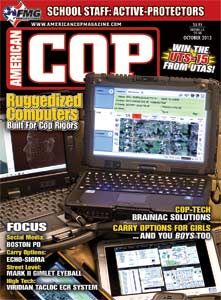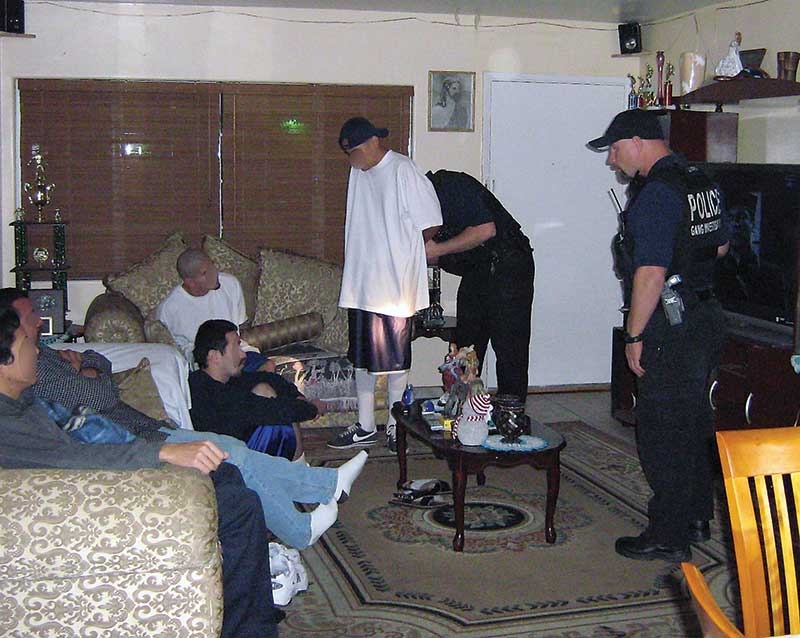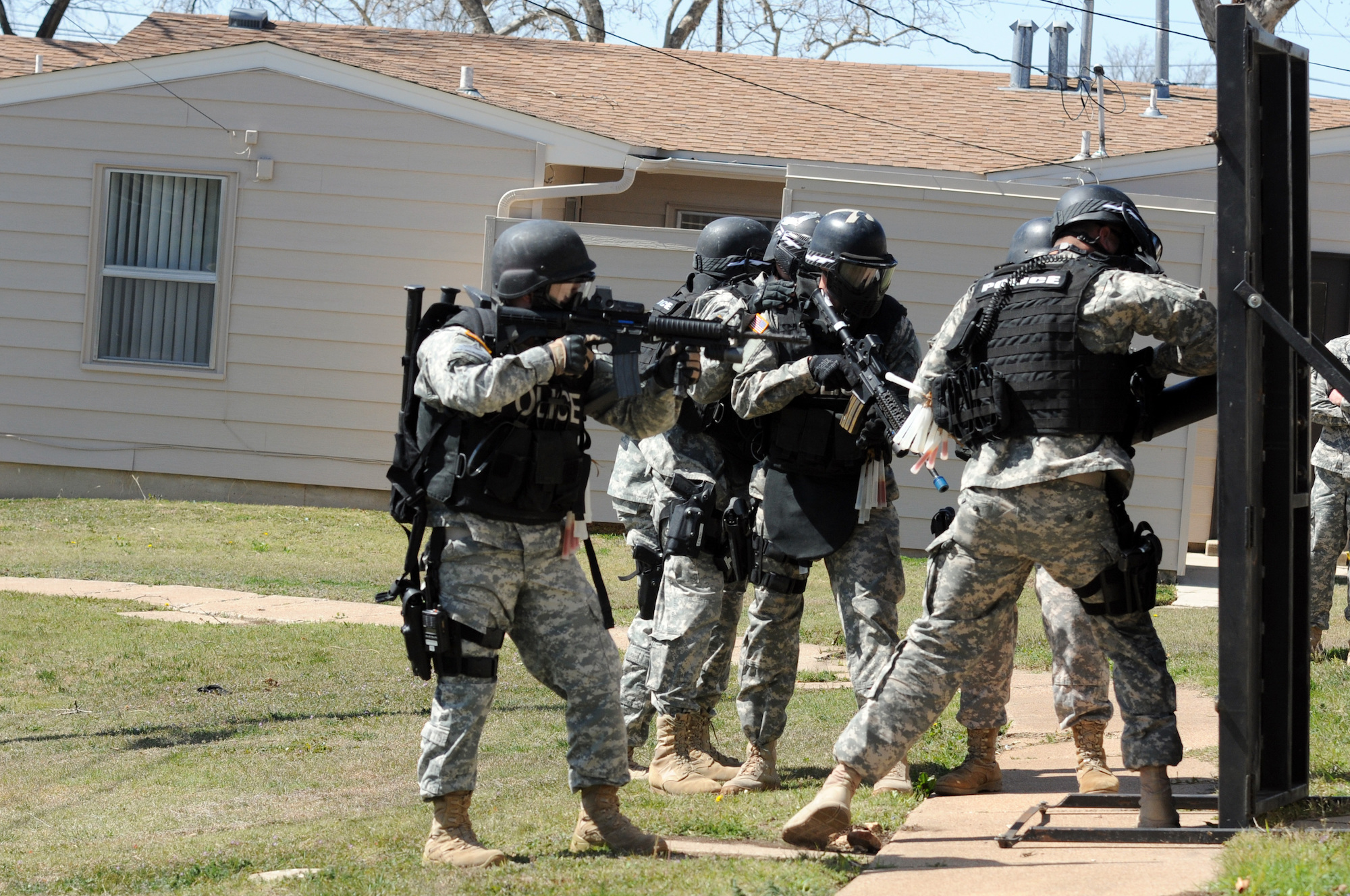
SL_1
Spotting Problems Before They Get You Killed.
In mid-May, a patrol officer responded to a call regarding an unruly student on a “special needs” school bus. It was potentially a very dangerous situation, as the kid was allegedly “out of control,” and “attempting to unbuckle the driver and pull the radio out of the driver’s hand,” while the bus was rolling. The driver managed to pull over safely and radio for help.
The officer arrived and calmed the student down. The kid was no longer confrontational. It was decided the officer should stay on the bus for the remainder of the trip to school, just in case. The two were sitting on the same bench seat as the bus putted along, and suddenly there was a loud BANG!
The kid had stuck his finger into the cop’s holster and fired the “secured” holstered pistol. The pistol wasn’t removed and pressure or movement didn’t alter its position in the holster. The slug punched through the seat and was embedded in the deck. No one was injured.
A police spokesperson described the pistol as one having its primary safety built into the trigger (sound familiar?) and said the unnamed holster was a new model, which had been issued about 6 months previously. The kid accessed the trigger freely enough to trip the safety and fire a shot. Those holsters were being pulled from service until an investigation was completed.
A while back I wrote about another incident in which an officer found that if he went belly-down prone without first drawing his sidearm, the pivoting hood on his Level 3 security holster couldn’t flip forward because it was blocked by the ground. He couldn’t draw his weapon without rolling to his offhand side. That’s a tough thing to learn in a gunfight. That model holster had been in common use on his agency, and he’d never heard any warnings about that characteristic.
The standard-issue holster of a European police department boasted excellent security, preventing attempts to gain control of an officer’s sidearm when pulled up or from the rear. A modified “break-front” design, it required grasping the weapon in a firm drawing grip and rocking it forward and down, pivoting on the gun’s muzzle. They were pleased with the holster, and officers reported situations where suspects had tried unsuccessfully to pull out officers’ guns. Then the flaw appeared.
While quelling a riot, the commander saw his troops were being flanked from a side street. He barked orders, and about 20 cops took off running hard to block the hostiles. Almost immediately, sidearms started flipping out of those holsters and skittering on the pavement. Some “less intense” bystanders scampered out, snatched up the loose pistols and handed them to officers. The holsters had been thoroughly tested — but never at a hard run. That particular combination of arc-of-motion and centrifugal force overcame the molded fit and safety features.
Not Just Holsters, Either
Long ago while I served as Director of Training with San Diego PD, we evaluated an extended electric stun baton. Two of my in-service training officers tested the handle-mounted switches, the strength and balance of it and, painfully, its effectiveness. Just before giving it their stamp of approval, one noted they had not been using the wrist lanyard while running through their drills. That bothered him. With the baton “energized,” he stuck his wrist through the lanyard and performed a slightly angled thrust, exactly as he would when standing off an opponent. The lanyard tightened — and switched the juice OFF. It turned out that if you weren’t thrusting forward almost perfectly straight and level, the lanyard turned the unit off nearly every time; another characteristic you don’t want to discover in extremis.
Another agency purchased several expensive high-tech control boxes which mounted to the upper interior of their cruisers, just forward of seated officers’ heads. They controlled all the party lights, alley lights, toggle-directed spotlights and PA system; they had integral radio speakers, report-writing lights, prisoner illumination, and probably soup-coolers and espresso dispensers. Oh, they were marvelous.
Within a few weeks several hundred dollars of damage had been done and half were out-of-service. Releasing shotguns from the receiver-gripping dash-mounted racks was no problem; push the button and grab the receiver. It was the violent upward motion required to pull the shotgun butts loose from their pressure-clamping bases that had not been tested. Introduce a little adrenaline and that yank becomes even more violent. Oops. No more party lights, no espresso. Hmmm…
How Does This Happen?
You older sergeants could probably name a half-dozen other cases of gear or techniques, which weren’t fully vetted, grunt-tested, and where failures ranged from looney-toons to life- threatening. Why weren’t these problems discovered during initial assessment or pre-purchase evaluation? Why didn’t training officers catch these fatal flaws?
One of my training officers explained, “After a while, we get tunnel vision. We tend to only think in terms of the equipment or technique doing what it’s supposed to do, and how to train officers to use it properly. So, we evaluate according to proper use by sharp cops.” He said we needed to pull in good cops, klutzes, mallet-heads and hard-chargers, and turn ‘em loose for trials-by-fire. But no agency will approve the cost, risks or possible damage of that.
So who’s going to put the Mark II Gimlet Eyeball on things? Who’s best qualified to see how things work — or not — in the field, by Officer AnyCop? Maybe somebody with lots of experience, a critical nature … and three stripes on their sleeve.
Sounds like you, sergeant.
By John Morrison
Read More Street Level Articles
Order Your Printed Copy Of The American COP October 2013 Issue Today!
Download A PDF Of The American COP October 2013 Issue Now!















